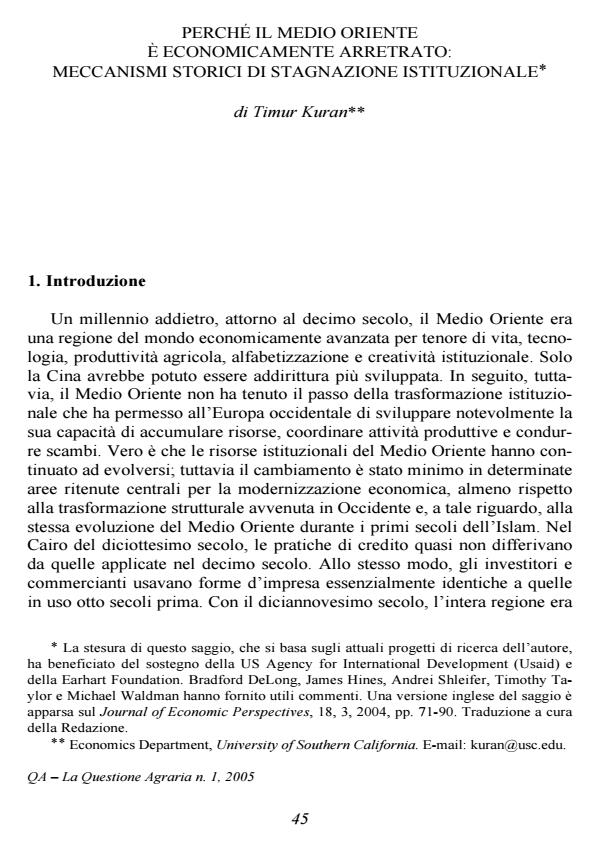Perché il Medio Oriente è economicamente arretrato: meccanismi storici di stagnazione istituzionale
Journal title QA Rivista dell’Associazione Rossi-Doria
Author/s Timur Kuran
Publishing Year 2005 Issue 2005/1 Language Italian
Pages 29 P. File size 249 KB
DOI
DOI is like a bar code for intellectual property: to have more infomation
click here
Below, you can see the article first page
If you want to buy this article in PDF format, you can do it, following the instructions to buy download credits

FrancoAngeli is member of Publishers International Linking Association, Inc (PILA), a not-for-profit association which run the CrossRef service enabling links to and from online scholarly content.
Why the Middle East is Economically Underdeveloped: Historical Mechanisms of Institutional Stagnation - Although a millennium ago the Middle East was not an economic laggard, by the 18th century it exhibited clear signs of economic backwardness. The reason for this transformation is that certain components of the region’s legal infrastructure stagnated as their Western counterparts gave way to the modern economy. Among the institutions that generated evolutionary bottlenecks are the Islamic law of inheritance, which inhibited capital accumulation; the absence in Islamic law of the concept of a corporation and the consequent weaknesses of civil society; and the waqf, which locked vast resources into unproductive organizations for the delivery of social services. All of these obstacles to economic development were largely overcome through radical reforms initiated in the nineteenth century. Nevertheless, traditional Islamic law remains a factor in the Middle East’s ongoing economic disappointments. The weakness of the region’s private economic sectors and its human capital deficiency stand among the lasting consequences of traditional Islamic law.
Timur Kuran, Perché il Medio Oriente è economicamente arretrato: meccanismi storici di stagnazione istituzionale in "QA Rivista dell’Associazione Rossi-Doria" 1/2005, pp , DOI: